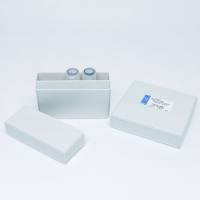Direct Differentiation of Human Embryonic Stem Cells into Selective Neurons on Nanoscale Ridge/Groove Pattern Arrays
互联网
互联网
相关产品推荐

NUGGC抗体NUGGC兔多抗抗体Speckled-like pattern in the germinal center antibody抗体NUGGC Antibody, Biotin conjugated抗体
¥880

miRNA靶基因PCR芯片(miRNA Target PCR Arrays)
询价

EmbryoMax™ 青霉素-链霉素溶液,100X,用于细胞培养, The EmbryoMax Penicillin-Streptomycin Solution, 100X is available in a 100 mL format and may be used for routine mouse embryonic stem cell culture applications.,阿拉丁
¥174.90

Gria1/Gria1蛋白Recombinant Mouse Glutamate receptor 1 (Gria1)重组蛋白GluR-1;AMPA-selective glutamate receptor 1;GluR-A;GluR-K1;Glutamate receptor ionotropic, AMPA 1;GluA1蛋白
¥1836

IL-2重组蛋白|Recombinant Human IL2 Protein
¥1080
相关问答

